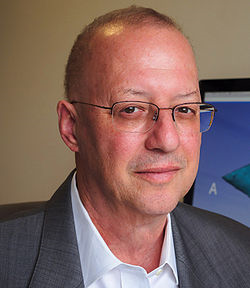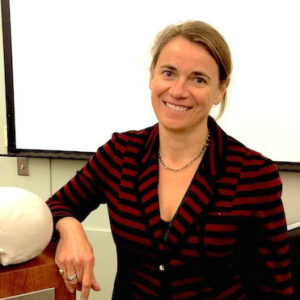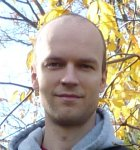Difference between revisions of "CNF Imaging Workshop"
(→Dr. Andrey Fedorov) |
(→Dr. Andrey Fedorov) |
||
| Line 40: | Line 40: | ||
<li style="display: inline-block;"> | <li style="display: inline-block;"> | ||
[[File: Andrey.png|thumb|left|500px| ''' ''']] | [[File: Andrey.png|thumb|left|500px| ''' ''']] | ||
| + | |||
| + | </li> | ||
= Schedule = | = Schedule = | ||
= Registration = | = Registration = | ||
Revision as of 19:29, 13 June 2019
Contents
Overview
The CNF Imaging Workshop is designed to bring together the top experts of Imaging from Harvard Medical School to address new ways and methods of Imaging. This will be a highly interactive workshop as participants will transfer technology and know-how from the medical imaging community to basic physics in this case nuclear femtography.
The workshop will include presentations and demonstrations from several professors. Dr. Ron Kikinis will address historic perspective, lessons learned etc. Dr. Steve Pieper will talk about the recent software design for 3D Slicer, an imaging tool both CRTC and Gagik are using. Dr. Tina Kapur will talk about building a community around the ecosystem that you manage to create and transfer technology to industry. Dr. Andrey Fedorov will address developer's issues, and Dr. Alexandra Golby will talk about the ease-of-use and flexibility from user's point of view.
Presenters
Dr. Ron Kikinis
Dr. Ron Kikinis is the founding Director of the Surgical Planning Laboratory, Department of Radiology, Brigham and Women's Hospital, Harvard Medical School, Boston, MA, and a Professor of Radiology at Harvard Medical School. This laboratory was founded in 1990. Before joining Brigham & Women's Hospital in 1988, he trained as a resident in radiology at the University Hospital in Zurich, and as a researcher in computer vision at the ETH in Zurich, Switzerland. He received his M.D. degree from the University of Zurich, Switzerland, in 1982. In 2004 he was appointed Professor of Radiology at Harvard Medical School. In 2009 he was the inaugural recipient of the MICCAI Society "Enduring Impact Award". On February 24, 2010 he was appointed the Robert Greenes Distinguished Director of Biomedical Informatics in the Department of Radiology at Brigham and Women's Hospital. On January 1, 2014, he was appointed "Institutsleiter" of Fraunhofer MEVIS and Professor of Medical Image Computing at the University of Bremen. Since then he is commuting every two months between Bremen and Boston. During the mid-80's, Dr. Kikinis developed a scientific interest in image processing algorithms and their use for extracting relevant information from medical imaging data. Since then, this topic has matured from a fairly exotic topic to a field of science. This is due to the explosive increase of both the quantity and complexity of imaging data. Dr. Kikinis has led and has participated in research in different areas of science. His activities include technological research (segmentation, registration, visualization, high performance computing), software system development, and biomedical research in a variety of biomedical specialties. The majority of his research is interdisciplinary in nature and is conducted by multidisciplinary teams. The results of his research have been reported in a variety of peer-reviewed journal articles. He is an author and co-author of over 300 peer-reviewed articles. As part of his service to the community, he serves as reviewer for a large number of journals and conferences from the fields of imaging, biomedical engineering and, computer science. He has served and is serving as member of external advisory boards for a variety of centers and research efforts. He is the Principal Investigator of 3D Slicer, a free open source software platform for image analysis and visualization. Over the years Dr. Kikinis has served as the Principal Investigator(PI) and site PI of a number of large and small NIH and NSF funded grants (see here for his NIH funding). This includes the National Alliance for Medical Image Computing (NA-MIC). He is currently serving as the PI of the Neuroimaging Analysis Center (NAC) and the Quantitative Image Informatics for Cancer Research (QIICR). He is also the Director of Collaborations for the National Center for Image Guided Therapy (NCIGT).
Dr. Alexandra Golby
Dr. Golby's research focuses on the translation of a broad range of neuroimaging techniques to neurosurgical planning and intraoperative guidance. The overarching goal of this work is to help surgeons perform optimal brain surgery by defining and visualizing critical brain structures and pathologic tissue to be removed. Since 1998, she has worked on the development and validation of fMRI for the pre-operative evaluation of patients with lesions in and near critical areas of the brain. This has been a translational research effort which adapted fMRI, initially developed as a neuroscience technique to be applied in groups of subjects to make statistical inferences about populations, to the vastly different scenario of clinical decision-making for individual patients. Since her research program began at BWH in 2003,Dr. Alexandra Golby's group has developed new techniques for the use of fMRI in single subject analyses necessary for surgical planning. In addition, they have developed numerous acquisition strategies geared towards accommodating the limited neurologic functions of some patients as well as analytic approaches to maximize the utility of fMRI for surgical planning. Presurgical fMRI has the potential to bring meaningful pre-operative individualized functional anatomy mapping to neurosurgeons around the world as an alternative to awake mapping, a technique which is demanding and remains limited to very specialized centers. Dr. Alexandra Golby has also worked extensively on the translation of diffusion MRI (dMRI) including tensor imaging (DTI) to map white matter anatomy in neurosurgical patients. Diffusion MRI allows the in vivo depiction of the location, course and integrity of macroscopic white matter tracts in the brain through a process known as tractography. As with fMRI, the translation of this technology to clinical decision-making has required numerous fundamentally novel approaches. Her group has developed segmentation approaches for defining tracts based on high dimensional clustering as well as statistical atlases which allow labeling of individual patient tracts even in the setting of mass effect and peritumoral edema. Her group works collaboratively with MRI physics and MRI analysis groups to continue to be at the forefront of technical innovation. They have released many of our tools to the public via 3D Slicer (slicer.org) and have organized several international challenge workshops to apply diffusion techniques to real world clinical data. With both these methods, translation of the technology required understanding of clinical needs, constraints, and opportunities for improved clinical care. Specific analysis techniques needed to be developed to adopt these techniques so that they were applicable to single subject data, and, in particular, to neurologic patients who have structural lesions and often are limited by their neurological deficits. In these efforts, they work closely and collaboratively with scientists in radiology and computer science to translate emerging technical innovations into the operating room. Another major area of translational investigation is in the development of intraoperative imaging techniques. Dr. Golby was the lead surgeon in developing the AMIGO (Advanced Multi-modality Image-Guided Operating Suite) at BWH and serve as the Co-director of AMIGO. AMIGO is one of the key resources of the National Center for Image Guided Therapy funded by NIH. This suite contains all contemporary imaging methods within an operating room environment and was specifically designed to support translational research. The suite is the site of many of surgical procedures in which we are developing strategies for intraoperative imaging and guidance. Several of her group's important research efforts are built on the AMIGO platform. These include the intra-operative use of high field MRI including development of intra-operative dMRI tractography. They have also leveraged the resources of the AMIGO suite to develop novel strategies to simplify intraoperative imaging using techniques such as ultrasound and stereovision to give surgeons information in near real time to guide surgery. Another area of research leveraging the resources of AMIGO is the development of tissue level molecular imaging. Dr. Alexandra Golby's group has funded collaborative projects using mass spectrometry, Raman spectroscopy, and fluorescence imaging. Their eventual goal is to give surgeons in most settings tools that will help them to perform safer and more effective surgery.




